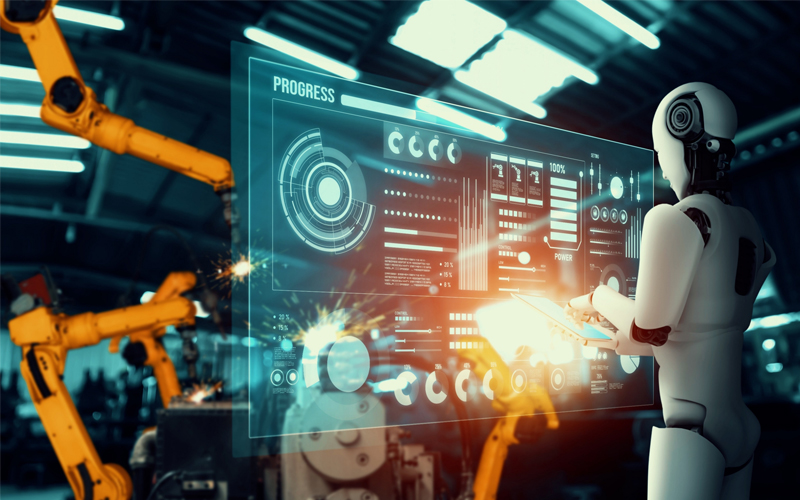AI in Smart Manufacturing
Artificial Intelligence (AI) is now in everyday use for many businesses. One area where this is certainly the case is in the manufacturing industry. In manufacturing, the main goal is to produce high-quality products, improve efficiency and productivity, reduce costs, and increase profits, all while satisfying their customers. Smart manufacturing has been one of the fastest emerging ways in which to improve operational efficiency on and off the factory floor, and with AI, manufacturers can enable digital transformation and develop roadmaps for a smarter, more productive future.
There are several examples of how AI can be integrated into manufacturing, but to apply it, we must first understand what AI is and how it can benefit a business. AI is a branch of computer science that enables machines to perform tasks that would normally require human intelligence. It can be presented in a variety of ways, from robotic arms that can perform physical tasks to algorithms that take the guesswork out of decision-making.
We can see AI everywhere; from the smart devices you speak to at home to the chatbots you engage with on your favourite website. In the manufacturing sector this can be applied at scale and deliver a number of benefits, some of which we’ll discuss in more detail below:
Making the most of data
Data is vital for businesses in the manufacturing sector, and many are using Industrial IoT and edge computing solutions to extract data directly from the factory floor. AI can leverage this data intelligently to improve the manufacturing process in various ways. For example, AI will be able to determine when stock from a certain part of the production line will run out, improving supply chain efficiency. Another benefit could be that AI is able to gauge the wear and tear on components in machines on the factory floor. By highlighting this and prompting replacements, AI can both improve downtime and productivity.
Getting smarter with machine learning
AI is also applied to machine learning, which means it can also learn and adapt according to its experiences. This means that not only can efficiencies be gathered in the short term, but also AI can adapt and improve into the future. With this approach, hardware costs are reduced, and businesses remain on top of new and improved technologies. But how do we manage and make the most of this data from the factory floor?
How IIOT Leverages Smart Objects
The Industrial Internet of Things (IIoT) is a network of intelligent devices connected to form systems that monitor, collect, exchange, and analyse data. Incorporating AI technology with the IIoT means that smart AI objects can be used anywhere and everywhere they’re needed.
These deployed AI objects can collect information from across your factory floor and collate it into meaningful data sets. This means you can embed analytics and machine learning modules pretty much anywhere you need them, and then view the data and use it to inform meaningful change.
Boosting productivity
However, this doesn’t eliminate the need for a human workforce. One of the main misconceptions workers have with AI is that it will mean large-scale redundancies in the manufacturing sector as machines replace people. Businesses should be focusing on how they can work in unison with AI rather than an ‘us and them’ approach. A lack of international standardisation means that smart AI objects require engineers to implement as they see fit. Additionally, the introduction of AI can benefit the workforce as repetitive and time-consuming tasks that previously needed to be performed by staff can be handled by AI technology. This leaves skilled and time-poor workers to complete more cognitively challenging and interesting tasks.
Over the last few years, AI has moved from being a radical theoretical concept to a practical applied solution. Manufacturers can realise huge gains from implementing it into their production line, but it’s important to consider the impact across the entire organisation. Getting buy-in from every level will ensure seamless adoption and ultimately bigger rewards.
To learn more about our smart manufacturing solutions, click here.

